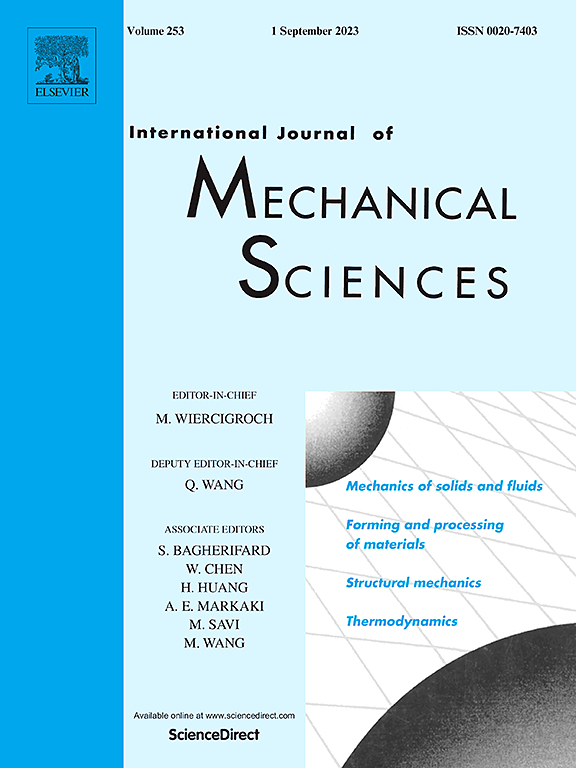Stability conditions of tensegrity structures considering local and global buckling
IF 7.1
1区 工程技术
Q1 ENGINEERING, MECHANICAL
International Journal of Mechanical Sciences
Pub Date : 2025-02-01
DOI:10.1016/j.ijmecsci.2025.109951
引用次数: 0
Abstract
This study introduces an approach for assessing the stability of tensegrity structures by examining local and global buckling behaviors. We employ the minimal coordinate to parameterize the tensegrity configuration, incorporating nodal displacement and local bending deformation. A detailed formulation of the potential energy for tensegrity structures is presented under compression, tension, and bending. The formulation of the equilibrium equation is obtained using the principle of stationary total potential energy. Further, we study the stiffness characteristic of the structure by developing the tangent stiffness matrix. The equilibrium and stiffness of tensegrity structures with consideration of initially crooked members are derived. Our findings indicate that local and global buckling behaviors remain independent in perfect straight axial force member assumptions while they become coupled with consideration of initially crooked members. The critical buckling load of tensegrity structures under external load can be calculated by a generalized eigenvalue problem. The proposed method is also applicable to cable nets, trusses, and space frames.

求助全文
约1分钟内获得全文
求助全文
来源期刊

International Journal of Mechanical Sciences
工程技术-工程:机械
CiteScore
12.80
自引率
17.80%
发文量
769
审稿时长
19 days
期刊介绍:
The International Journal of Mechanical Sciences (IJMS) serves as a global platform for the publication and dissemination of original research that contributes to a deeper scientific understanding of the fundamental disciplines within mechanical, civil, and material engineering.
The primary focus of IJMS is to showcase innovative and ground-breaking work that utilizes analytical and computational modeling techniques, such as Finite Element Method (FEM), Boundary Element Method (BEM), and mesh-free methods, among others. These modeling methods are applied to diverse fields including rigid-body mechanics (e.g., dynamics, vibration, stability), structural mechanics, metal forming, advanced materials (e.g., metals, composites, cellular, smart) behavior and applications, impact mechanics, strain localization, and other nonlinear effects (e.g., large deflections, plasticity, fracture).
Additionally, IJMS covers the realms of fluid mechanics (both external and internal flows), tribology, thermodynamics, and materials processing. These subjects collectively form the core of the journal's content.
In summary, IJMS provides a prestigious platform for researchers to present their original contributions, shedding light on analytical and computational modeling methods in various areas of mechanical engineering, as well as exploring the behavior and application of advanced materials, fluid mechanics, thermodynamics, and materials processing.
 求助内容:
求助内容: 应助结果提醒方式:
应助结果提醒方式:


